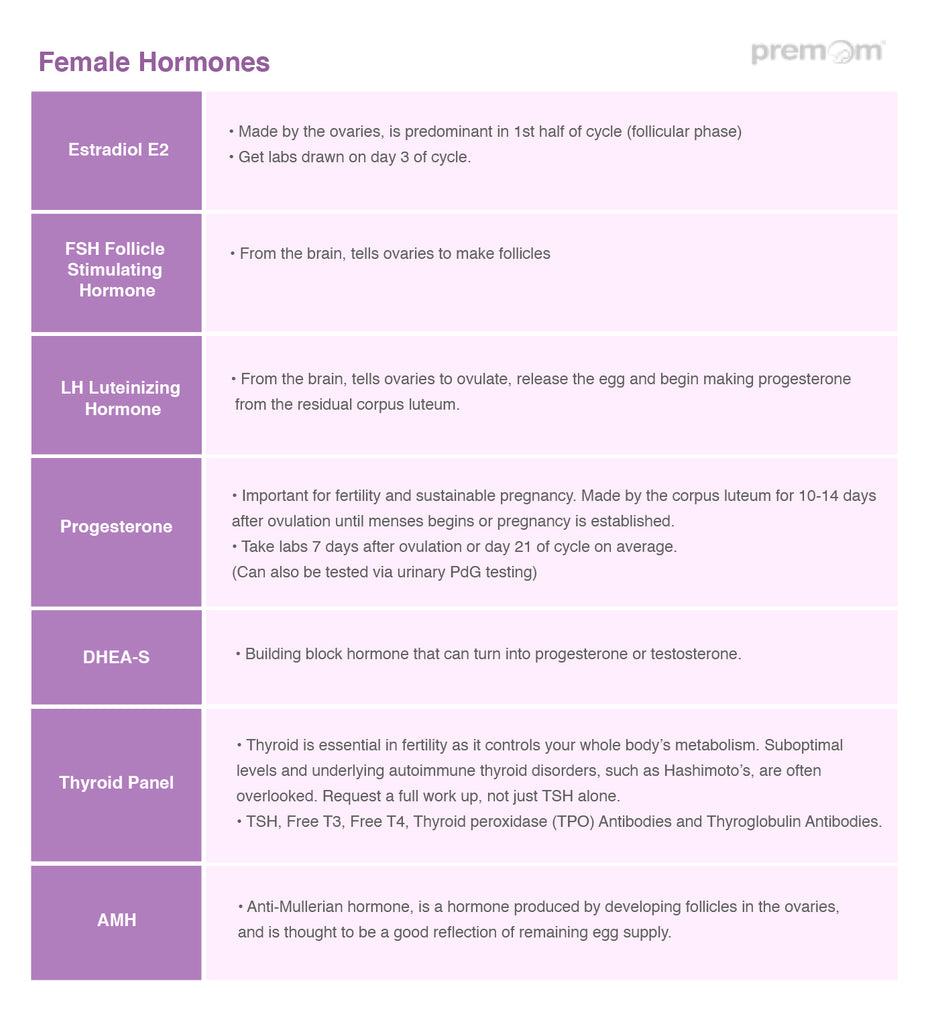Inability to Get Pregnant While Using Ovulation Tests, Basal Body Temperature (BBT), and Progesterone Testing: What to Investigate Next!
October 19, 2020 | By: Dr. Patti Haebe, N.M.D
Schedule a consultation with Dr. Haebe right through your Premom app!
You’ve been diligently logging your LH strips, timing your intercourse to your fertile window and confirming ovulation using BBT and PdG test strips, but you still haven’t gotten a positive pregnancy test. You may be wondering what’s going on with your body and what your next steps should be to conceive.
Regardless of regular or irregular cycles, after TTC (trying to conceive) for a few cycles you may begin to feel disheartened and frustrated -- but know that you are not alone!
Here’s a new vocabulary word for you: fecundability, the probability of achieving pregnancy within one menstrual cycle. The fecundability of a woman is approximately 20-25% per cycle, dependent on age. We see the highest rates of fecundability peaking at age 25 and declining slowly thereafter. It’s important to keep this statistic in mind as it reminds us that it can take months of consistency, (4 months up to twelve or more), dependent on our age, to have a successful pregnancy.
But you may be wondering: what can you do in the meantime? What can you begin to investigate to ensure your fertility is intact?
Start with Sperm!
That’s right, if you’ve been TTC for a while now (especially if it’s been 12+ months), it’s time to get your partner’s sperm tested. A semen analysis takes a sample of a male's ejaculate and tests not just the number of sperm ("sperm count"), but also the shape (morphology) and their ability to move correctly (motility). All of these components of sperm health impact fertility. Not only do you need sufficient semen present, but the sperm must also be well-shaped and able to swim well through the cervix and up to the top of the uterus in order to fertilize the egg.
If you’ve tested your partner's sperm in the past -- or already have children -- your partner may feel exempt from this testing. However, it’s recommended that levels be retested at least every 2 years, and many even recommend not just one -- but two -- semen analyses over the course of 3 months to get an accurate picture of male fertility.
Lifestyle, high temperature, oxidative stress, testosterone replacement therapy and marijuana use can all inhibit sperm quality. It’s important to check this one off your list when struggling to conceive.
Talk with Your Doc!
You may be reluctant to set up an appointment, but it’s never too early to begin a conversation with your physician about your desires to conceive. Most doctors are receptive to your reproductive concerns. If they are not, it’s always a great idea to get a second opinion if you feel your needs are not being met.
If you're under the age of 35, your doctor may be hesitant to investigate your reproductive concerns further until you’ve been TTC for over a year. For those over the age of 35, it's TTC unsuccessfully for 6 months. However, many are willing to start digging into the health picture early!
Oftentimes they’ll run some combination of the labs below. You can even bring this list with you to your next appointment!

Imaging: Take a look!
They’ll also likely want to do some imaging to ensure that there isn’t anything anatomical stopping an egg from successfully implanting! Adhesions, fibroids and endometriotic growths can all potentially prevent implantation. If you’ve had sexually transmitted infections, ectopic pregnancies or pelvic inflammatory disease in the past, imaging is a key step in ensuring there is not scarring effecting your fertility.
Ultrasound: Ultrasounds use high frequency sound waves to create an image. In cases of sub-fertility they are often used transvaginally and externally across the lower abdomen. Doctors can use this to get more information on your endometrial thickness, number and size of follicles in the ovaries and even look at uterine shape.
Hysterosalpingogram (HSG): This technique involves a fluoroscopic examination of the uterus and fallopian tubes (the tubes that help transport eggs from the ovary to the uterus). A contrast material, or “dye” solution will be injected into your uterus and fallopian tubes to ensure that there aren’t any blockages along the route that an egg will travel. If there are fallopian tube blockages, this procedure can actually sometimes help open them!
Hang in there!
While it can be frustrating to not get pregnant as quickly as you had hoped, it is essential that you continue tracking and logging all of your cycle information (LH strips, BBT, PdG testing ,CM etc.) as you begin your fertility investigation. This helps to ensure that you maintain clear visibility on what your cycle is doing, and how changes you may be starting to implement are impacting your cycle. If you find your healthcare provider doesn’t align with your needs, never be afraid to seek out a second -- or third -- opinion to make sure your concerns are being addressed.
Here at Premom we have compiled a database of different fertility specialists who can provide insight on any fertility need. If you’re confused about whom to turn to and what to ask for, a virtual consultation with one of our MDs, Nurse Practitioners or Naturopathic Doctors could be just what you need!
Dr. Patti Haebe is a results-obsessed naturopathic doctor. She specializes in pre-conception preparation, fertility and hormone optimization. She is committed to root-cause healing through therapeutic supplementation as well as targeted diet and lifestyle modifications. Her virtual practice, Ocotillo Integrative Medicine, provides integrative consultations worldwide via webcam for those looking to incorporate natural, proactive approaches to their healthcare and fertility journey. Schedule a consultation with Dr. Haebe right through your Premom app!
Sources:
- https://www.sciencedirect.com/topics/psychology/fecundability#:~:text=Fecundability%20is%20defined%20as%20the,pregnancy%20(ESHRE%2C%202001)
- https://www.radiologyinfo.org/en/info.cfm?pg=hysterosalp
- https://www.advancedfertility.com/amh-fertility-test.htm
- https://www.verywellfamily.com/ultrasound-scan-for-infertility-testing-and-treatment-4125852
 Download Premom App
Download Premom App




